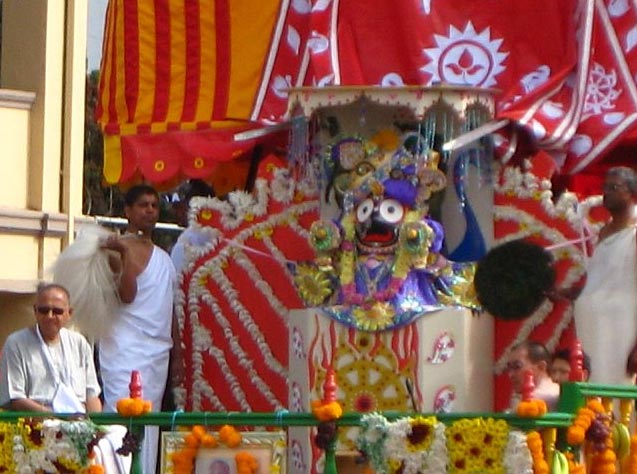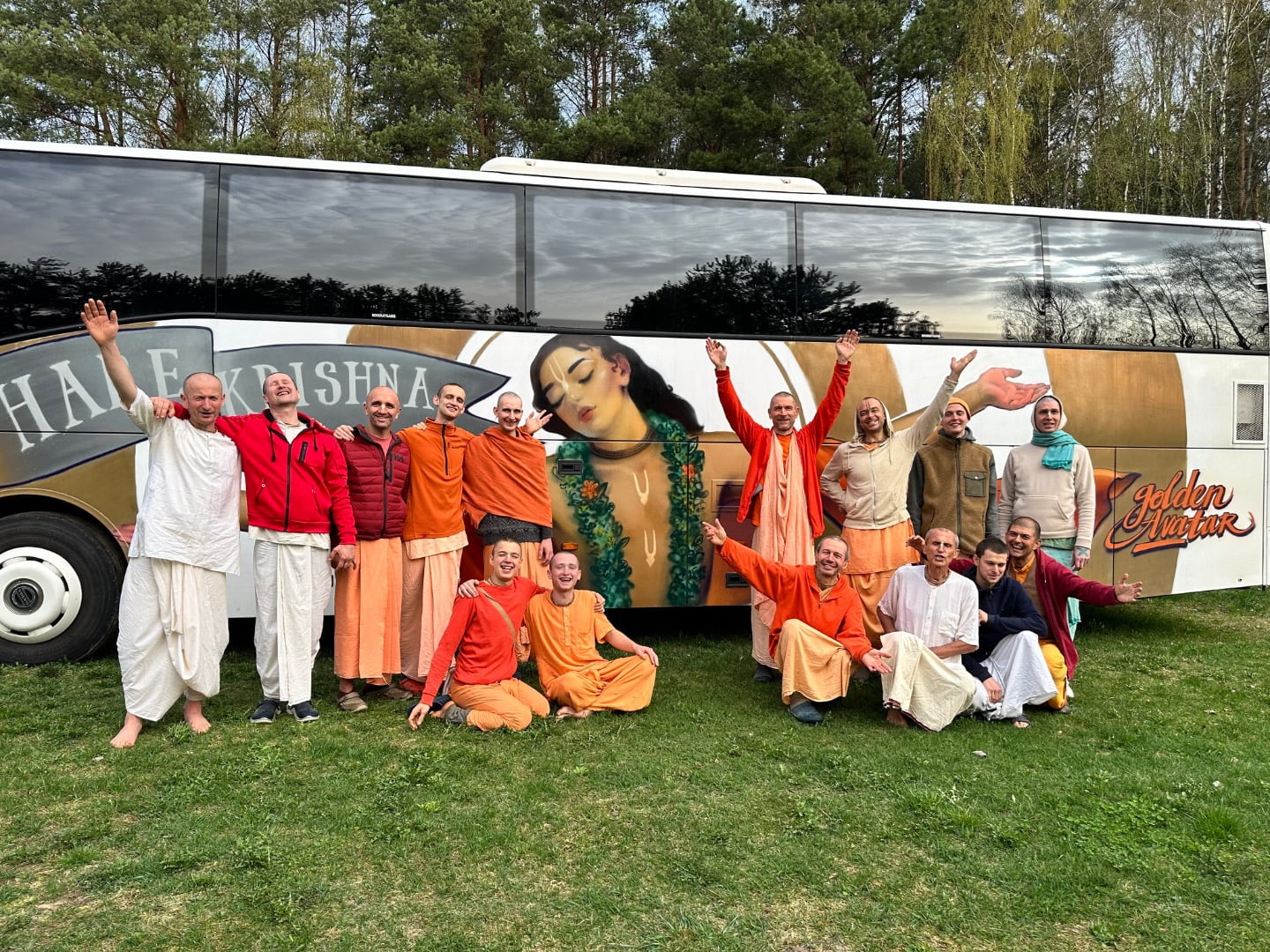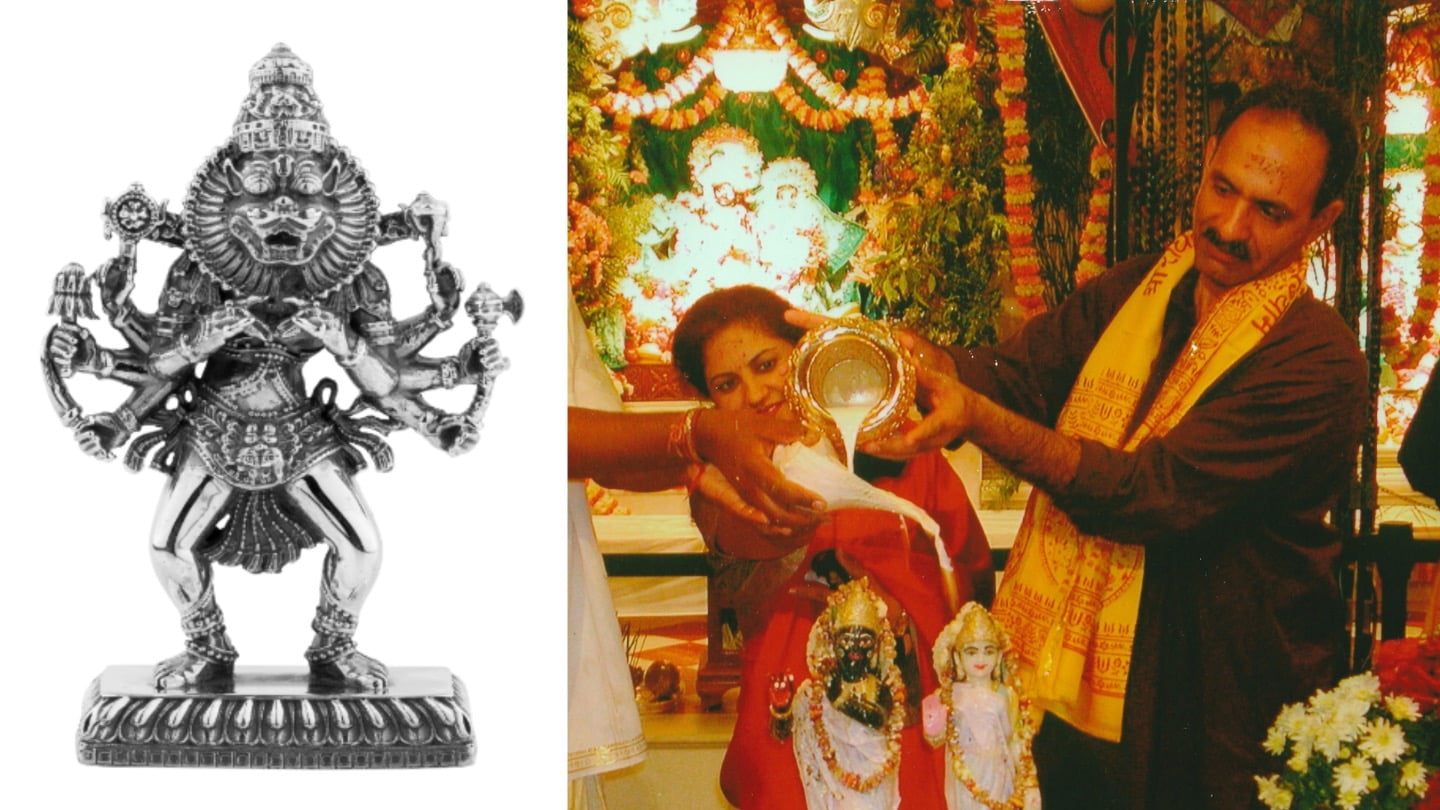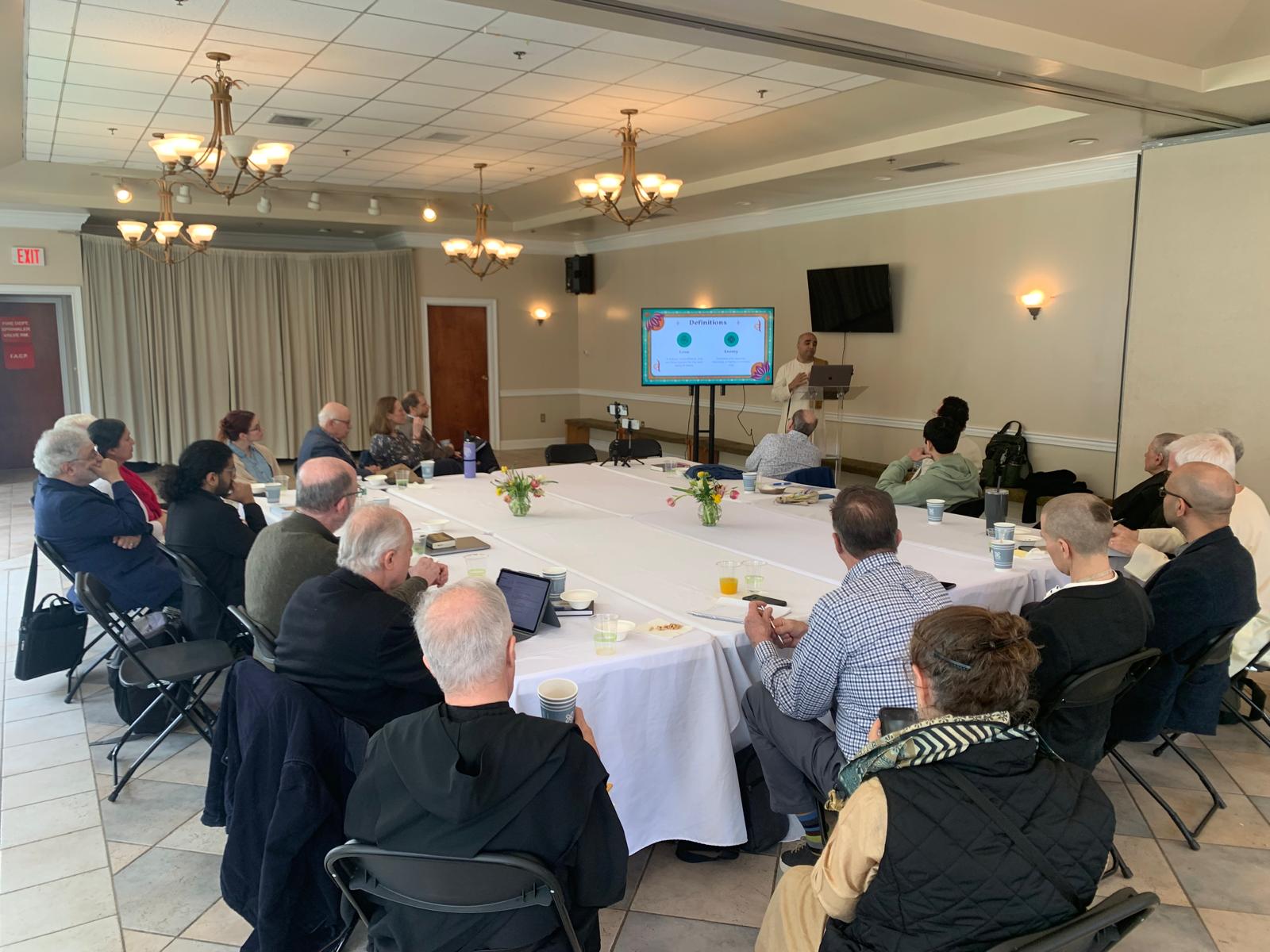South Africa Experiences 21 Years of Jagannatha’s Festival
By Rupa Jagernauth | Apr 25, 2009

Durban, South Africa – To those of the Christian faith, Easter represents the day Jesus was resurrected from the dead. For many Christians, it is a time for celebration and a time for feasting. Much like the Christians, Easter also represents a time for celebration for members of the International Society for Krishna Consciousness (ISKCON) in Durban, South Africa, but for a different reason. For the past 21 years, ISKCON Durban has held its annual Ratha Yatra festival over the course of Easter weekend. The four day festival, which took place from April 10 – 13, is widely considered to be the largest Ratha Yatra outside of India, attracting an estimated quarter million people over the four days. Devotees travelled from all over South Africa as well as other African countries and even from as far as India, Canada, and the United States, to partake in the festivities. Honored guests included many prominent ISKCON sannyasis such as Bhakti Caitanya Swami, Partha Sarathi das Goswami, Kadamba Kanana Swami, Bhakti Narasimha Swami, Mahavishnu Swami, Bhakti Visrambara Madhava Swami, Bhakti Bringa Govinda Swami, Bhaktimarga Swami, and the founder of the Durban Ratha Yatra, Indradyumna Swami.
While much of the buzz surrounding Durban Ratha Yatra is due to its sheer size, a look at the festival’s humble beginnings proves equally interesting. Under the direction of His Divine Grace A.C. Bhaktivedanta Swami Prabhupada, Ratha Yatra was first performed outside of India on July 9, 1967 in San Francisco. Indradyumna Swami states, “Srila Prabhupada wanted to transplant Vedic culture to the West. Music, dance, philosophy, performing arts – this is what India is. Ratha Yatra is therefore an integral part of the Krishna consciousness movement.” While free spirit and religious independence was a prominent characteristic of Western society, such public displays of Eastern religion / culture were considered criminal during the apartheid in South Africa. During this era of racial segregation and religious discrimination, neither Indians nor blacks were allowed to publicly practice their religious beliefs.
Introduction of Ratha Yatra to this African nation required someone with a white body to propose the idea, given the state of the political regime. Enter Indradyumna Swami. In 1989, Indradyumna Swami approached local Durban officials with an idea for small, peaceful, one-day festival on the beachfront. Durban officials were known at the time to be less stringent in their application of the rules of the apartheid in comparison to officials from other parts of the country. Through his negotiations, Indradyumna Swami reached an agreement with the Durban government who allowed ISKCON to hold its first Ratha Yatra. Indradyumna Swami recalls, “Inspectors were scheduled to arrive at the festival site at 11AM to perform a walkthrough to ensure that we complied with the rules. Devotees worked all through the night and by 4AM, the tents and the main stage had been set up. The inspectors had no choice but to allow it (the festival site was larger than anticipated by the inspectors).” The festival was very successful and drew a very diverse crowd in which Indradyumna Swami describes as “33% white, 33% black, and 33% Indian.” Such racial harmony had not been seen in years. As this was viewed as a direct defiance of the apartheid, the festival made the front page of the newspaper in Durban. Fortunately for the devotees, there were no adverse consequences. The years that followed saw the end of the apartheid regime and with it, a steady growth in the attendance of the Festival of Chariots.
Preparations for such a large festival are quite a sight to behold, especially when it comes to preparing meals for 250,000 guests. Beginning at approximately 1AM each festival day, a group of dedicated devotees gathered in a field on temple property where 108 metal cauldrons were carefully stationed. For hours on end, devotees cooked prasadam over small fire pits in a manner reminiscent of days long ago, before the advent of gas stoves and electricity. From both the temple ashram and the road, it was quite a picturesque scene with 108 fires lighting up the night sky. For four days straight, devotees worked long hours to ensure no one would leave the festival hungry.
Meals were not the only aspect of the festival that required lengthy preparation. For the past 10 years, Bhaktimarga Swami has travelled to Durban and worked with the local youth to put on dramas each night of the festival. These dramas have become highly anticipated over the years and for many, it is the highlight of the stage program. This year, Maharaj worked with approximately 35 local actors of all ages to produce two wonderful dramas. Maharaj and the actors invested countless hours over the course of the week leading up the Ratha Yatra, with rehearsals starting in the morning and lasting until night. As always, the rehearsal time is well worth it as these dramas never disappoint.
Day one of the festival was marred by heavy rainfall and cool temperatures. The copious amount of rain caused the main tent to be flooded, with certain sections remaining unuseable due to the high water levels. The main attraction for the first night of festivities was the abhisek (bathing ceremony) of Lord Caitanya. A packed tent watched on in awe and reverence as Lord Caitanya was bathed with various auspicious substances such as milk and yogurt. Accompanying the bathing ceremony was a beautiful kirtan lead by B.B. Govinda Swami. One by one, devotees approached the front of stage to dance and sing, without a care in the world. Soon the whole front of the tent was packed with devotees. To add to the excitement, fruits and flowers that adorned the body of Lord Caitanya were cast off into the audience as the abhisek progressed. Devotees did everything in their power to get even the smallest piece. Though the weather outside was dark and dreary, nothing could put a damper on the mood of the people in that tent. It was as if the world beyond the white plastic walls of the tent were nonexistent. The first night concluded with the premiere of the drama Nandulal, the story of Vilvamangala’s search for Krishna. The touching story was a crowd pleaser and a great way to end the first night.
Day two brought clear skies, pleasant temperatures, and low humidity – all in all, a perfect day for the Ratha Yatra procession. The ceremony began with speeches and the traditional breaking of the coconuts. The streets were lined with devotees and onlookers trying to catch a glimpse of the happenings. As the procession was ready to start, kirtan parties formed and devotees tactfully positioned themselves so they could have an opportunity to pull the cart. Lord Caitanya’s cart was the first to take off followed by Baladev, Subhadra, and Jagannatha. As the procession weaved its way through the streets of Durban, people could be seen both on the streets and on their balconies admiring the colorful festival. Ladies and gentleman of all ages danced and sang to their hearts’ content for the duration of the procession. Those positioned on the carts threw fruits to the crowd on the street, and on the balconies. Prior to making the turn onto the beachside road, the three carts for Baladev, Subhadra, and Jagannatha were lined up in a row, with Lord Caitanya’s cart facing the three carts. The crowd positioned themselves in the middle, danced and sang along to the kirtan. It was truly a sight to behold. As the procession entered the home stretch along the beach, people poured out of their hotels and came out onto their balconies to see what all the fuss was about. Onlookers took photo after photo, trying to capture this beautiful sight. That night, the second drama, “The Eighth Boy”, debuted. This drama told the story of Krishna’s birth and His slaying of Kamsa. For the second night in a row, the crowd was left speechless by the amazing performance of the local actors.
Durban Ratha Yatra 2009 concluded with a nighttime procession on the last day of the festival. Devotees gathered at the festival site to take Lord Caitanya, Jagannatha, Baladev, and Subhadra through the beachfront one last time for 2009. Fireworks from Lord Baladev’s cart and the traditional coconut breaking kicked off the procession. The carts themselves were outlined with gorgeous blue lights up and down the canopy and were visible from great distances. The backdrop of the procession was beautiful with the lit carts up against the beachfront and the ocean. The procession took the crowd through the beachfront for about an hour and a half. Even though it was dark, the crowd was noticeably large. Upon returning the festival site, Nandulal, the drama from the first night, was performed once again and shortly thereafter, the final kirtan, lead by Indradyumna Swami, concluded Durban Rath Yatra 2009.














